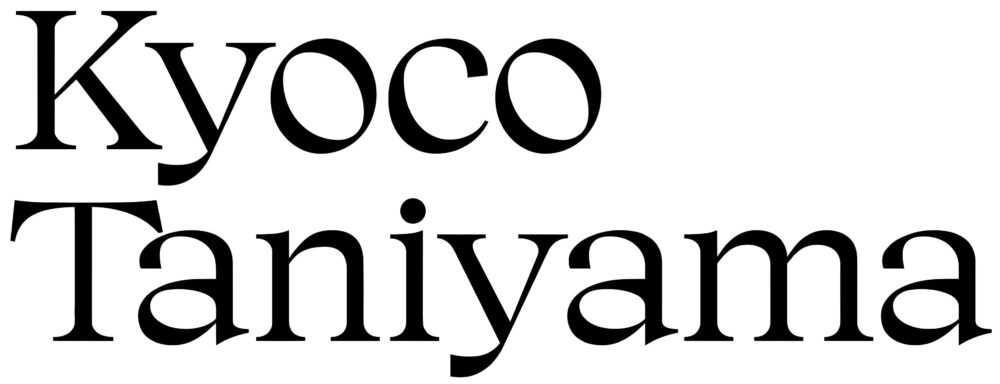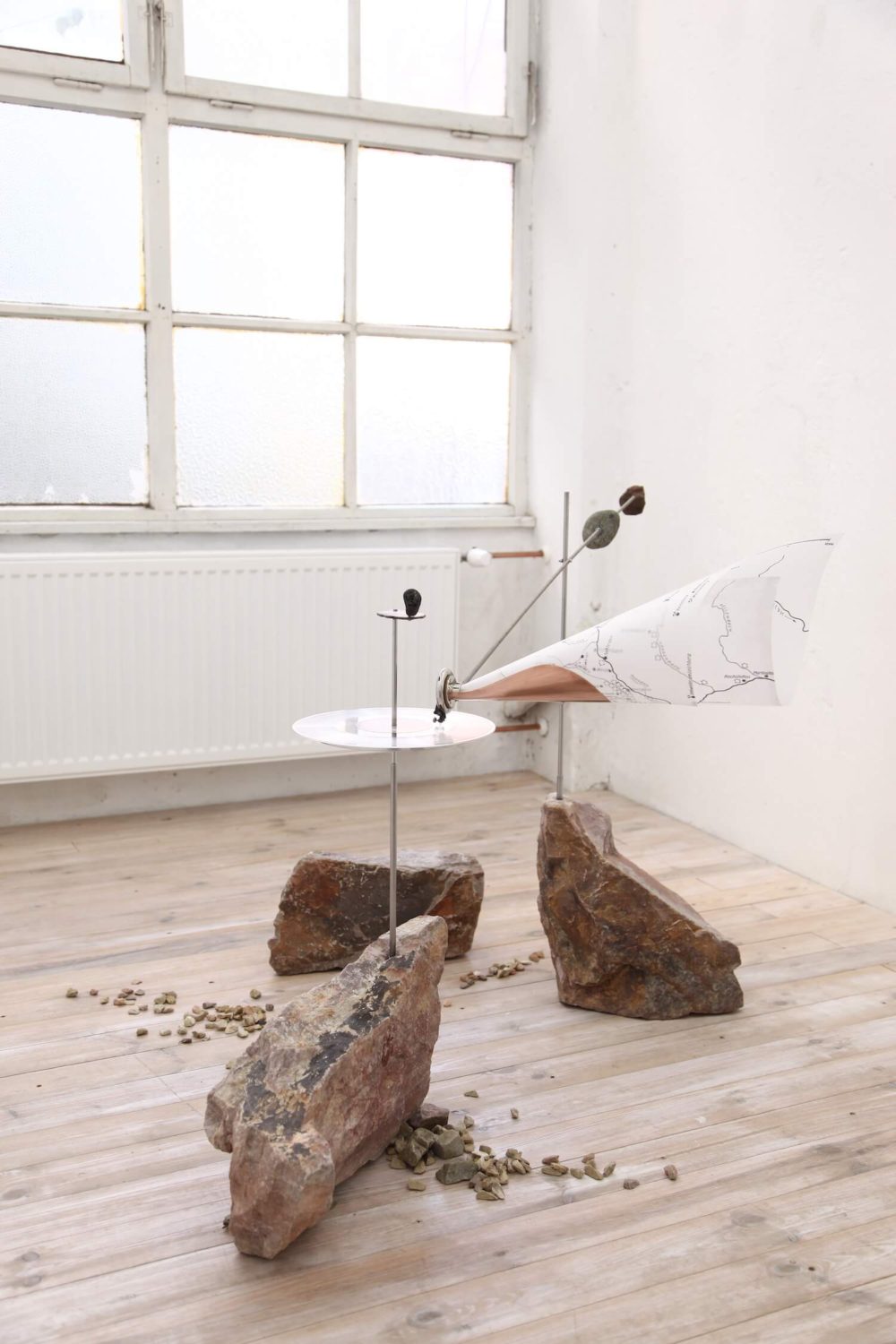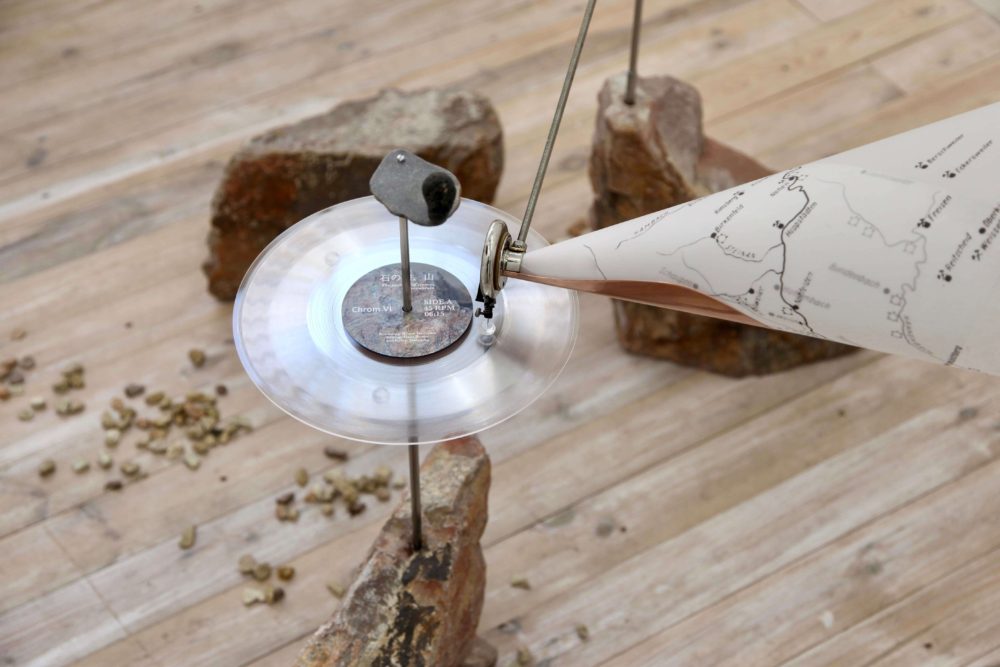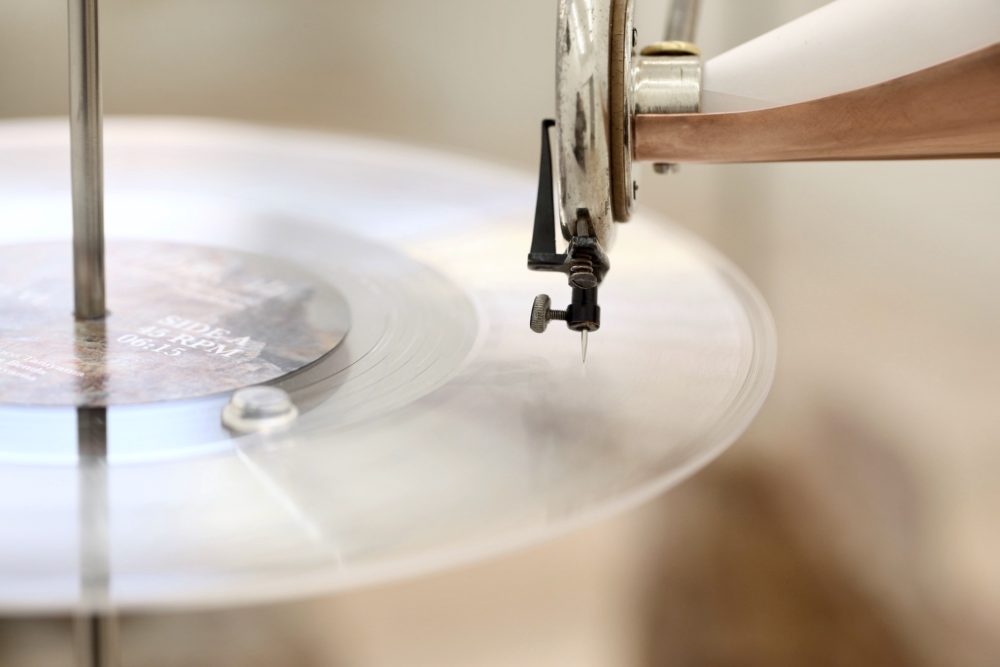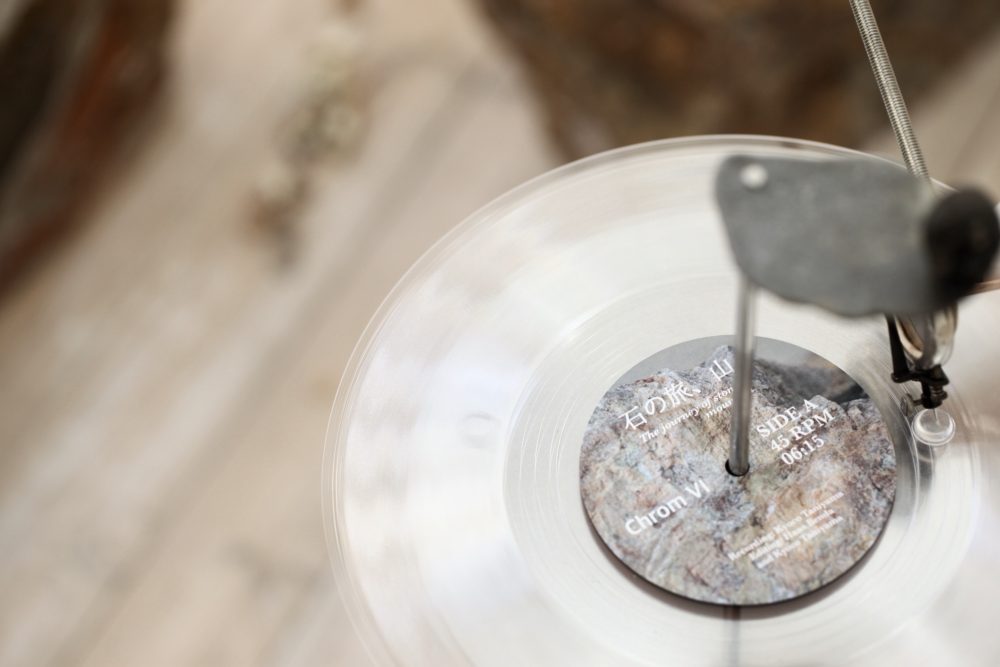The journey of stones, mountain 石の旅、山 2021
- Home
- /
- Portfolio
- /
- Installation
- /
- The journey of stones, mountain 石の旅、山 2021
The journey of
stones, mountain
Solo exhibition
16.October – 24. November, 2021
Chrom VI
Ritterstrasse 11a, Hinterhof, 55743
Idar-Oberstein, Germany
This Exhibition is a part of “Symposium
ThinkingJewellery XII (12 – 17 October 2021)”
Kyoco Taniyama Exhibition page of HOCH
SCHULE TRIER campus Idar-Oberstein
Curation – Hans Benda (Chrom VI)
Special thanks – Chrom VI, JAKOB BENGEL
STIFTUNG, HOCH SCHULE TRIER campus
Idar-Oberstein
This work is a homage to the prosperous era of the gemstone industry and the workers who once worked there.
I created it after being inspired by the history of Idar-Oberstein, Germany, which has a long history as the Gem Center of Europe. Its history began in the late 14th century when miners found Amethyst and Agate in Idar and Oberstein. After these gemstones ran out, German workers immigrated to Brazil in the 19th century and initiated mining, cutting, and gemologist techniques.
In the former days, more than 5000 workers had worked in the small town. For more than 150 years, the Nahe River was polluted by toxic substances from chemicals for colouring metal until flooding in 1995 closed most of the precious metal factories. In addition, workers had health damage from harmful substances and dust from stone cutting. Now, this labour has moved to India, including Asia and other production countries.
At present, high-quality gem dealers and cutters are working in Idar-Oberstein, and we can find all kinds of gemstones from all over the world in this small town.
Interestingly, we can find gemstones (of poor gemstone quality) on the banks of the Nahe River because in the past, polishing factories were built by the river to utilise the waterpower from the Nahe River, and the polishers used to throw the poor-quality gems into the river. While standing on the banks of the Nahe River, we can get a sense of the wider world and its long history.
個展
期間: 2021年10月17日 – 11月25日
Chrom VI, Idar-Oberstein, Germamy
“Symposium ThinkingJewellery XII (12 – 17 October 2021)”
Kyoco Taniyama Exhibition page of HOCH SCHULE TRIER campus Idar-Oberstein
サウンド・スカルプチャー(素材:石、ステンレス 、グラモンフォン・ヘッド、10インチレコード)、6分間のサウンドピース(画家ハンス・ベンダとのコラボレーション)、映像、写真、青写真
ヨーロッパの宝石産業の中心地として長い歴史のあるドイツのイダー・オーバーシュタインの歴史にインスパイアされ制作した作品。その歴史は14世紀後半に鉱山労働者がイダーとオーバーシュタインという小さな町の周辺でアメジストとアゲートを発見したことから始まりました。その後宝石は枯渇し、19世紀にドイツ人労働者はブラジルに渡り、採掘、カット、宝石鑑定の技術を伝授しました。
かつてこの小さな町には5000人以上の労働者が働いていたといいます。1995年の洪水でほとんどの貴金属工場が閉鎖するまでの150年にわたって、ナーエ川は金属を着色するための化学物質による有害物質で汚染されていました。そして労働者たちは、有害物質や石を切るときの粉塵で健康を害してたといいます。現在、この労働力はインドをはじめとするアジア諸国やその他の生産国に移っています。
現在、イダー・オーバーシュタインでは、ハイエンドの宝石商と研磨職人がおり、あらゆる種類の宝石がこの小さな町に集まっています。興味深いのは、ナーエ川のほとりで宝石(宝石としての品質は不十分)が見つかることです。なぜなら、昔、研磨工場は水力を利用するために川のそばに建てられており、研磨師が品質の良くない宝石を川に投げ捨てていたからだそうです。ナーエ川のほとりに立ちながら、広い世界とその長い歴史を感じることができるのです。
宝石産業の繁栄したその時代とかつての労働者を讃え、偲び、共感し、そして敬意を表して。
<<
Performance for “The journey of stones, mountain.”
I turned the player with my hand. The repetitive motion to play the record without stagnation is a metaphor for “labor.” The process of the needle gradually scraping the surface of the vinyl record represents “time,” “oblivion,” and “ever-changing state.” Coincidentally, a diamond grinder on display at a local museum looks like a record player. It is an homage to former workers’ times and all kinds of labor.
Performance + side B
SIDE A 06:15
Recording: Kyoco Taniyama Editing: Hans Benda and Kyoco Taniyama
SIDE B 06:15
Recording: Kyoco Taniyama Additional instruments and sounds: Hans Benda Editing: Hans Benda and Kyoco Taniyama
Recorded on location Jakob Bengel Foundation, Deutsches Mineralienmuseum, and Quarry Allenbach, Idar-Oberstein 2021
Publisher: Chrom VI2021
Special thanks: Chrom VI, JAKOB BENGEL STIFTUNG and HOCH SCHULE TRIER campus Idar-Oberstein
